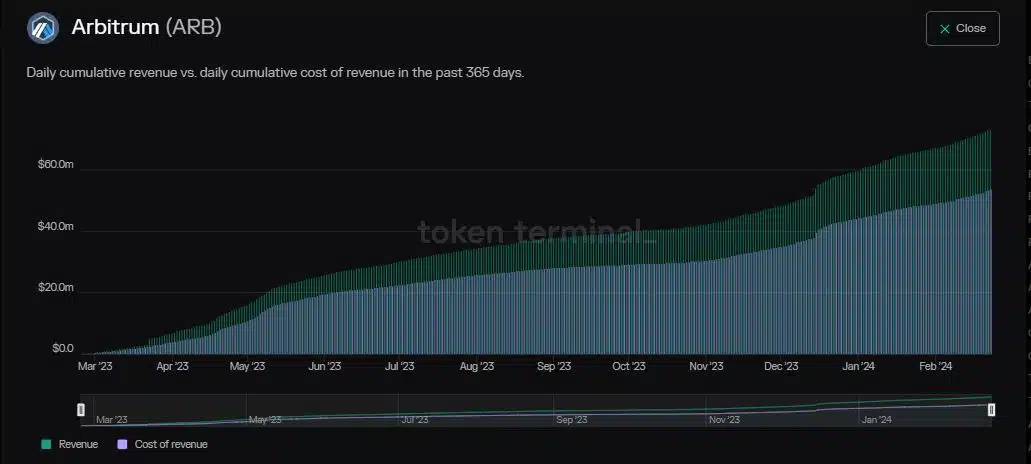[ad_1]
- Nearly 73% of the total earnings accrued to Ethereum holders.
- ARB was still witnessing considerable demand from the market.
One of the biggest success stories to have come out of last year’s bear market was the phenomenal growth of layer-2 (L2) blockchains.
Arbitrum [ARB], arguably a barometer of the industry’s performance, mopped revenues of over $72 million over the past year, according to AMBCrypto’s scrutiny of Token Terminal data.
This marked a nearly fourfold increase.
However, about $53 million, or 73% of the total earnings were accrued to Ethereum [ETH] holders, raising questions about the incentives offered to native ARB holders.
ARB holders at a disadvantage
Built on top of Ethereum, L2 blockchains process transactions off the main chain, thereby helping the latter to scale.
As part of the final settlement, the transactions are batched together and sent over to the main chain along with security proofs.
It is this very process that takes up a substantial amount of revenue earned on L2s.
A closer examination of the aforementioned data showed that Ethereum validators consistently received more than 70% of the daily transaction fees paid on Arbitrum.
While the upcoming Dencun upgrade was expected to reduce L1 storage costs drastically, the tokenomics leaves very little for ARB holders to celebrate.
Note that ARB doesn’t accrue any value from Arbitrum’s on-chain activity, and functions just as a governance token.
These factors may disincentivize ARB ownership in the long run.
Whales show interest in ARB
As of this writing, ARB was exchanging hands at $1.86, growing by 9% in the last month, according to CoinMarketCap.
This was significantly lower than gains made by other L2s like Optimism [OP] and Polygon [MATIC]. However, wealthy investors exhibited an affinity for L2 tokens in recent months.
Realistic or not, here’s ARB’s market cap in BTC’s terms
As per AMBCrypto’s examination of Santiment’s data, addresses holding between 1,000–10 million coins have swelled since December.
On a broader scale, around 140,000 new ARB holders were added in the aforementioned period, implying considerable demand from the market.
[ad_2]
Source link





